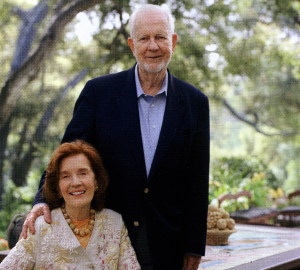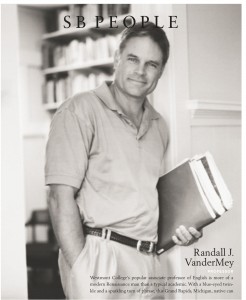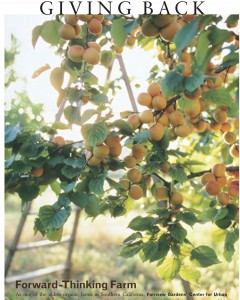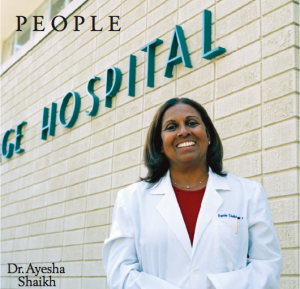A Look at Some of the Nonprofits Serving Children
What could be a more universal cause than striving to give children a brighter tomorrow and a more fulfilling future? Literally hundreds of opportunities exist to give back to children in the community. Unfortunately, we can’t include them all. Here’s a look at just a few of the many organizations working to on behalf of children’s issues and the solutions to their problems in the areas of at-risk youth; education; arts; and medical, emotional and physical health and safety.
Family Service Agency is Santa Barbara County’s first and oldest non-profit human service agency, offering several programs, including Healthy Start, which connects at-risk families with existing community resources; the Family Build Project, which addresses the needs of families living in government subsidized housing; and a variety of counseling and child guidance programs.
Another veteran organization offering a variety of services to at-risk children and others is the United Boys and Girls Clubs. It has been working with young people in town since 1945, and now has four clubhouses that offer day care, summer camps, and a plethora of programs including sports, art, academics and leadership development. While the organization once emphasized servicing children from disadvantaged backgrounds, “today we’re open to everyone, because all children are at risk,” says Executive Director Sal Rodriguez.
Also serving both at-risk youth and the wider community is the Police Activity League (PAL), which offers opportunities for instruction in art, digital editing, hip hop dance, martial arts, and basketball, as well as a tutoring center and a teen youth leadership council that are open to all children. PAL also has a Campership Alliance Program that collaborates with a number of organizations–including the City of Santa Barbara Parks & Recreation Department, United Boys & Girls Clubs, Santa Barbara Museum of Natural History, Santa Barbara YMCA, Santa Barbara Zoo, Refugio Junior Lifeguard Program, Elings Park Camps and Money Camp for Kids –to provide summer camp scholarships.
Endowment for Youth Committee is another broad-reaching organization, which provides a wide variety of educational, social, cultural and recreational achievement programs for children, with a special emphasis on assisting African American, Native American and Latino youth.
Girls Inc. also offers an expansive array of programs, but with an all-girl atmosphere that emphasizes learning to resist gender stereotypes and encouraging girls to take risks, acquire skills, gain confidence, become self-reliant, and practice leadership. Girls are also front and center for Affirm, another program that works only with girls, in this case focusing on empowerment, education, and identity for teenagers that are in the juvenile correction system.
Kids in trouble are also the focus for Noah’s Anchorage, operated by the YMCA. The group provides a Youth Crisis Shelter, which is the only program in Santa Barbara County that offers year-round 24-hour access to counseling, shelter, referrals, food and clothing for runaways, homeless youth and youth in crisis.
The Big Brothers Big Sisters program, run by Family Service Agency, also targets at risk youth, matching them up with adult mentors who provide positive role models and a one-on-one relationship. Another mentorship-based program is the Wilderness Youth Project, which offers after school, weekend and summer programs that utilize “nature-based mentoring,” where being out in nature facilitates crucial life lessons and connection with the natural world.
Working on the health and wellness front is CALM (Child Abuse Listening and Mediation), which acts to prevent child abuse from occurring and offers professional treatment for the entire family when abuse does occur. CALM works closely with police, the district attorney, child protective services and medical personnel to investigate alleged abuse in a supportive and child-friendly fashion.
The Teddy Bear Cancer Foundation is another organization that works with entire families, endeavoring to ensure that children with cancer receive the undivided comfort of their parents during the treatment and recovery process. Teddy Bear provides financial aid for rent, mortgage, utilities, and car payments, as well as other supportive services, thereby allowing families to focus on their children. “Teddy Bear is unique in that it adapts to each family’s distinct needs. We don’t provide just one service–we do whatever’s needed to help,” said Founder/Executive Director Nikki Katz.
On the education front, the Children’s Project is focused on developing an innovative boarding school and college preparatory academy for foster children and selected youth with mental health or delinquency issues. “People often ask me, ‘Why foster children? So many kids need help.’ While that is true, there is one big difference that separates foster youth from others in need. That is that we not only have a moral obligation to help them…we have a legal obligation. …The moment the judge removes the child from a parent’s care, WE become the parents to that child. We, as the community, step into that role. And I am convinced we can do a better job,” says Founder and CEO Wendy Read.
Another education nonprofit, the Computers for Families program, seeks to eliminate the negative consequences of the Digital Divide by providing students from low-income families with refurbished computers, Internet access and training. Thanks to this innovative program, Santa Barbara will be the first community in the United States to ensure that every child from a low-income family, beginning in the fourth grade, has a computer with Internet access.
For more than 43 years, the Scholarship Foundation of Santa Barbara has helped local students pay for their higher education, giving out more than $7 million in student aid for the last school year.
Emphasizing the arts is Art Walk for Kids, an outreach program that focuses on benefiting special needs, developmentally disabled, at risk, terminally ill youth and adults in their positive environments through a specialized curriculum of art and vocational education. Art Walk projects have benefited a diverse group of nonprofits, including the United Nations, Summit for Danny, United Way, the Red Cross, Sarah House, the Santa Barbara Symphony, the Lobero Theatre, I Madonnari, the Multi-Cultural Dance and Music Festival, Vieja Valley School, Santa Barbara County Juvenile Hall, El Puente School, and Hillside House, among others. Its latest collaboration is with the Patricia Henley Foundation, a new nonprofit that offers unique, free opportunities for students to learn all aspects of theatre arts production and develop their creative talents.
The Family Therapy Institute’s Academy of Healing Arts for Teens (AHA!) also incorporates creative expression into its programs, which emphasize the development of character, imagination, emotional intelligence, and social conscience in teenagers, and helps them learn to set goals, stop bullying and hatred, support their peers, and serve their community.
These excellent organizations are but a small percentage of all of the nonprofits serving children in Santa Barbara. For a more comprehensive list visit the Family Service Agency referral service at www.211sbcounty.org/.





